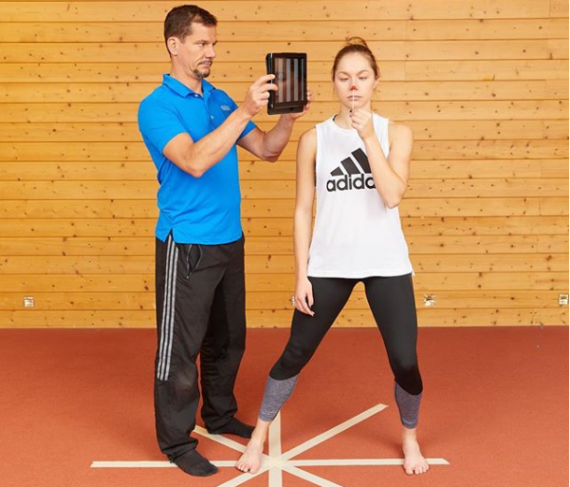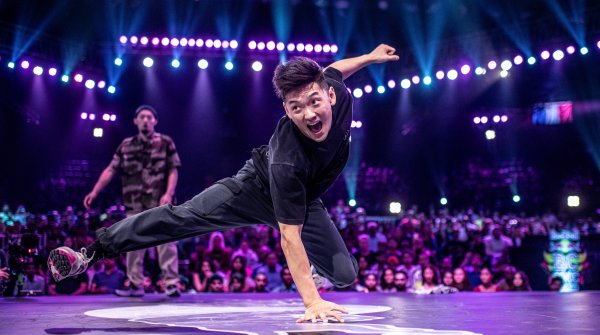
Lars Lienhard was already a small piece of the puzzle of success during the "summer fairy tale 2014". Back then, he helped football stars like Per Mertesacker, Mario Götze and Benedikt Höwedes on their way to the World Cup title with his special fitness training at Campo Bahia. Today, the sports scientist coaches FC Bayern star Serge Gnabry and Germany's best sprinter Gina Lückenkemper, for example.
In 2016, Lienhard had freed the sprinter Lückenkemper in a flash from stubborn pain in her hamstring with his exercises. Since then, Lückenkemper has relied on the training and has remained injury-free over the years. As Germany's fastest woman and 100-meter European runner-up, the 25-year-old even sees potential for improvement.
So there seems to be something to the fact that the training starts in the brain, as Lienhard describes in his new book. Gina Lückenkemper, for example, keeps the nerve pathways from the body to the brain intact with special stretching exercises: "You have to imagine these nerve pathways like a garden hose. If there is a kink in it, less water reaches it." The track and field athlete trains the visual system particularly intensively.
"This is one of the most important systems in our body. Clear information is needed here in order to be able to control movements properly," says Lienhard in an interview with ISPO.com, adding, "The better the visual information is for the brain via the eyes, the higher the quality of our movements. And the better and more pain-free I feel, too. Because pain also takes place in the brain and the visual system activates numerous brain areas that have to do with pain regulation."
So the goal of neuroathletic training is to stimulate the brain and nervous system to unlock more physical potential.

Also important in neuroathletics training is the elimination of asymmetries and imbalances in the body. Our body halves are controlled and coordinated separately by the brain, so targeted training of the "weaker side" - for example, the left hand in right-handed people - is usually helpful. Lienhard recommends three simple neuroathletics exercises to improve physical well-being.
There are particularly important structures in the human body, and these include the hands. "On the one hand, because we humans can do and feel so incredibly much with our hands, and on the other hand, because they put food in our faces," says Lienhard with a smile. There are numerous different joints in our hands, which can also be easily mobilized in a targeted manner at work, for example. For example, by circling the individual fingers or the wrist.
The balance - another important control system for our movement - is located in the inner ear directly in the skull bone. "That's why you should do yes-yes and no-no movements with your head every now and then as a little workout, i.e. nodding and shaking your head. This activates the organ of balance. The training provides an improvement in postural control in our body, gives more stability and thus helps to avoid pain," says Lienhard.
The eyes are certainly the most important element in the hierarchy of movement-controlling systems - our movement is significantly controlled and regulated by the eyes. The eye muscles are therefore among the most important muscles in the body, along with the heart. Many people like to train their biceps, pectoral muscles, etc., but the muscles that move our eyes are certainly more important," says Lienhard.
He therefore recommends as a workout to regularly circle your eyes, or to look at your finger as it is slowly brought closer and closer towards your nose, so that your eyes have to cross. These are then quasi push-ups for the eyes. However, eye relaxation exercises are just as important - especially if you look at computer or mobile phone displays for a long time. Lienhard: "For example, you can close your eyes and cover them with your hand to make them go completely black."
All these simple exercises, which can be supplemented by others from Lienhard's book, should lead to an increase in physical well-being and better movement via the brain. Lienhard: "We know we have a brain, but what we can use it for, we don't know. The body and brain are one - it's time we got the brain involved in training."
Finally, we answer the most frequently asked questions related to neuroathletics training.
Neuroathletics training and neurocentric training are the same thing. Both aim to improve physical performance through brain training and thereby also minimise the risk of injury.
Lars Lienhard has a solidified position in his field, as neuroathletics training is not yet widely available. His books are available online.
The website of Lars Lienhard lists dates for current (online) courses and seminars.
Selected academies allow the acquisition of an official trainer license for neuroathletics training.
 Know-HowThe 11 Best TRX Exercises
Know-HowThe 11 Best TRX Exercises
- Awards
- Mountain sports
- Bike
- Fitness
- Health
- ISPO Munich
- Running
- Brands
- Sustainability
- Olympia
- OutDoor
- Promotion
- Sports Business
- Textrends
- Triathlon
- Water sports
- Winter sports
- eSports
- SportsTech
- OutDoor by ISPO
- Heroes
- Transformation
- Sport Fashion
- Urban Culture
- Challenges of a CEO
- Trade fairs
- Sports
- Find the Balance
- Product reviews
- Newsletter Exclusive Area
- Magazine


